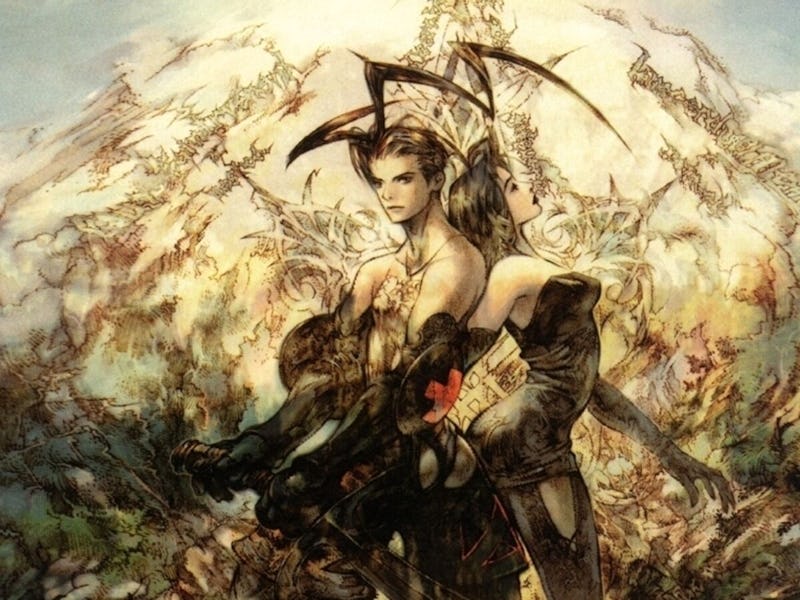22 years later, this cult classic RPG still holds up
Square’s overlooked classic.

Square Enix has no shortage of classic RPGs, especially when you consider all the games released by SquareSoft and Enix before the merger. Games like Chrono Trigger and Final Fantasy 7 spring to mind when you think of the company’s most influential games, but a more obscure title often gets overlooked. Vagrant Story is one of the most important RPGs ever released by Square, and even 22 years later it still holds up as a uniquely visionary title.
Vagrant Story was released at the tail-end of the PSX’s life cycle in May 2000, roughly a year and a half before Final Fantasy X. This is partly what led to the game being overlooked, as fans were already moving on to the next generation. What Vagrant Story accomplished with PSX hardware is utterly astonishing, and it was years ahead of its time in terms of cutscene direction, presentation, and overall aesthetic. In many ways, Vagrant Story feels like a precursor to games like Dark Souls, an unrelenting role-playing experience that refuses to hold the player’s hand and puts a huge emphasis on exploration and subtle storytelling.
The game follows Ashley Riot, a member of the Valendia Knights of the Peace, who’s responsible for upholding state security and law. Ashley heads to the city of Lea Monde in pursuit of the leader of a religious cult called Müllenkamp. Vagrant Story weaves a tale filled with politics and intrigue, all backed up by some fascinating lore that’s revealed piece-by-piece as the game goes on.
Vagrant Story’s unique visual aesthetic makes the game look like its own art.
Vagrant Story was directed and written by Yasumi Matsuno, who’s best known as the creator behind games like Final Fantasy Tactics and Final Fantasy XII. Matsuno’s style shines through in Vagrant Story, both in terms of the political themes of the story and how the narrative beats play out.
Unlike many of the JRPGs of the time, Vagrant Story is a solitary adventure that doesn’t feature towns or even other NPCs to interact with. Players make their way through the odd city of Lea Monde entirely alone, having to contend with countless creatures while trying to upgrade Ashley’s weapons and equipment.
Leá Monde itself is a fascinating setting, loosely inspired by the French Bordeaux. It’s a sprawling labyrinth that shows the remnants of abandoned civilization, and exploration is highly encouraged by awarding new weapons, spells, and story details. It’s a game that encourages players to piece everything together and learn a deep combat system. Combat uses a real-time pausable system similar to Parasite Eve, but has a lot you need to learn through trial and error. There are few tutorials, so you’ll be spending a lot of the early hours piecing together how all the systems interact.
Vagrant Story’s combat sports a unique “Risk” system that ups Ashley’s critical hit chance the longer he attacks, but lowers his accuracy and defense.
What’s most impressive about Vagrant Story is its stunning presentation and Shakespearean-inspired narrative. The development team adopted a unique visual style that makes the polygonal graphics of the PSX look almost like the game’s concept art. There’s a gothic aura to everything with such attention to detail put into each character model, even down to details like hair blowing in the wind. At the same time, the game focuses on quick and snappy cutscenes that sport unique and cinematic camera angles, rather than the lengthy exposition cutscenes of something like Final Fantasy.
All of this is supported by an utterly phenomenal script that feels vaguely Shakespearean and uses an old-English style. Vagrant Story was a huge step forward in terms of localization, and a 2017 US Gamer interview dives into why. One of the game’s translators, Alexander O. Smith, says the main direction they were given was to “make it biblical.” Smith goes on to explain the impact of the game by saying “to have reviews of a really good game that went out of their way to specifically mention the translation was huge in the short-term, helping me and other translators at Square internally make the case that yes, localization mattered, and needed to be taken seriously.”
Having a story delivered mostly in small bursts and environmental storytelling felt drastically different for the time, but 22 years later it feels fitting. Vagrant Story’s narrative influences can clearly be seen in Matsuno’s later works, like Final Fantasy XII, but it also feels like the game was wildly ahead of its time. Graphically there’s no game more impressive on the first PlayStation, outside of Metal Gear Solid. However, Vagrant Story’s real importance lies in the way it pushed stories and localization forward in video games, and it’s an absolute classic that desperately deserves to be revisited.